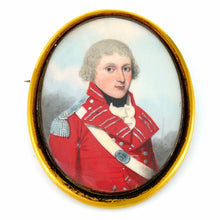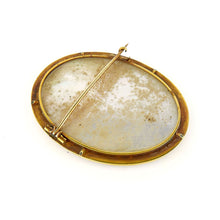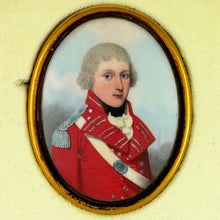Portrait Miniature of Francis Ralph West, 33rd Foot, 1794
- Regular price
- £1,650
- Sale price
- £1,650
- Regular price
-
- Unit price
- /per
Adding product to your cart
Oval: 7.5cm (3.25in) x 6cm (2.25in)
Watercolour on ivory. Portrait of an officer with powdered hair wearing the scarlet coatee with red facings and silver lace epaulette and regimental cross belt plate of the 33rd (1st Yorkshire West Riding) Regiment of Foot, over a white chemise and black stock. Contained in a glazed gilt frame with pin fitting verso. Cased. Ivory declaration reference: DLWGB59B
The present portrait is by Frederick Buck (1765-1840), the Irish miniaturist who trained at the Dublin Society Schools and established what was to become a lucrative studio at Cork in the late 1780s. During the French Revolutionary and Napoleonic Wars (1793-1815) Cork harbour became a major port of embarkation, and officers wanting to give loved ones a visual record of themselves as they departed for war flocked to Buck’s door. The 33rd Foot, under the command of the Hon. Arthur Wellesley (later 1st Duke of Wellington) since September 1793, marched into Cork in 1794 as part of a contingent destined for the the Duke of York’s ill fated Netherlands campaign which due to peacetime failings ended in an ignominious retreat. The powdered hair of our sitter is not dissimilar to that sported by the twenty-six year old Wellesley in John Hoppner’s famous portrait. It further indicates a date of circa 1795 when Prime Minister Pitt introduced a new tax on hair powder. Those wishing to continue the messy business of using hair powder had to obtain an annual certificate for the privilege at a cost of one guinea. There was an outcry against the expense and this combined with the hassle and incipient changes in fashion did not produce the revenue Pitt had hoped for. By 1795 the remains of the 33rd were back in England. Hopefully our sitter, whose epaulette suggests was a battalion company officer, was not transferred to the regiment’s grenadier or light companies, as these were detached while in the Low Countries to capture three French held islands in the West Indies, and were wiped out by disease on Guadeloupe. In 1797 the 33rd was sent to India where in 1799 it famously played a prominent role part in the Fourth Mysore War, the Fall of Seringapatam and the defeat of Tipu Sultan.












